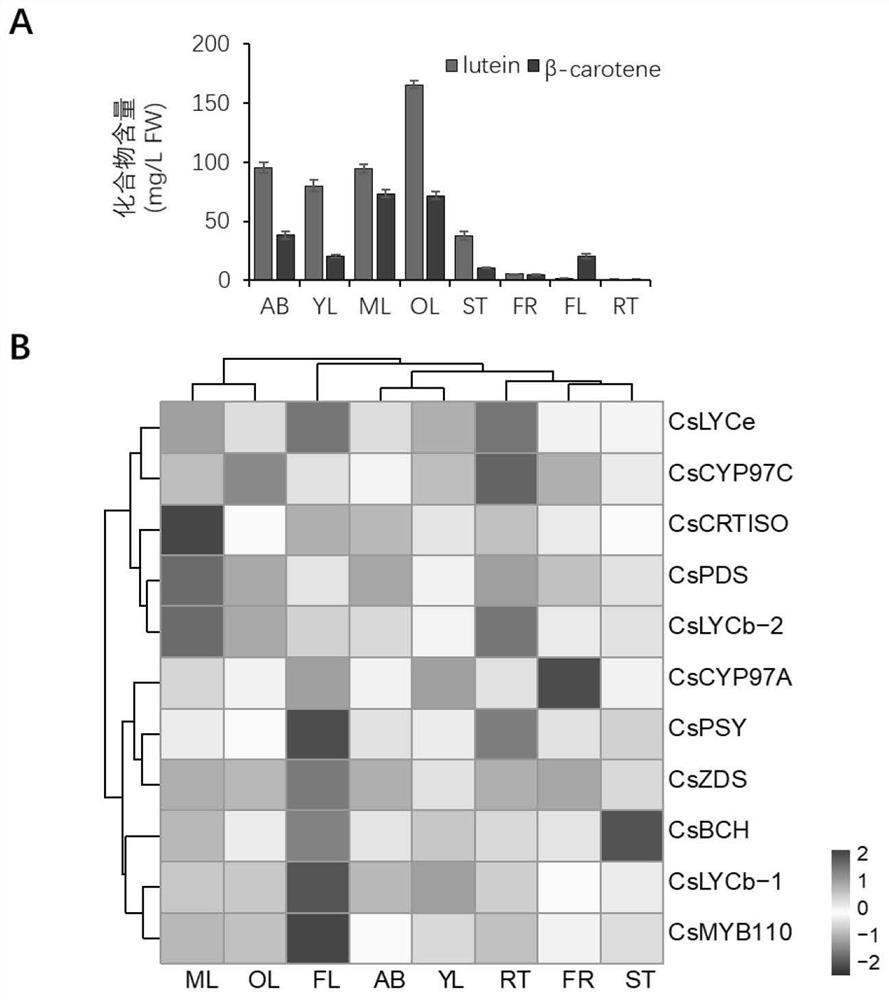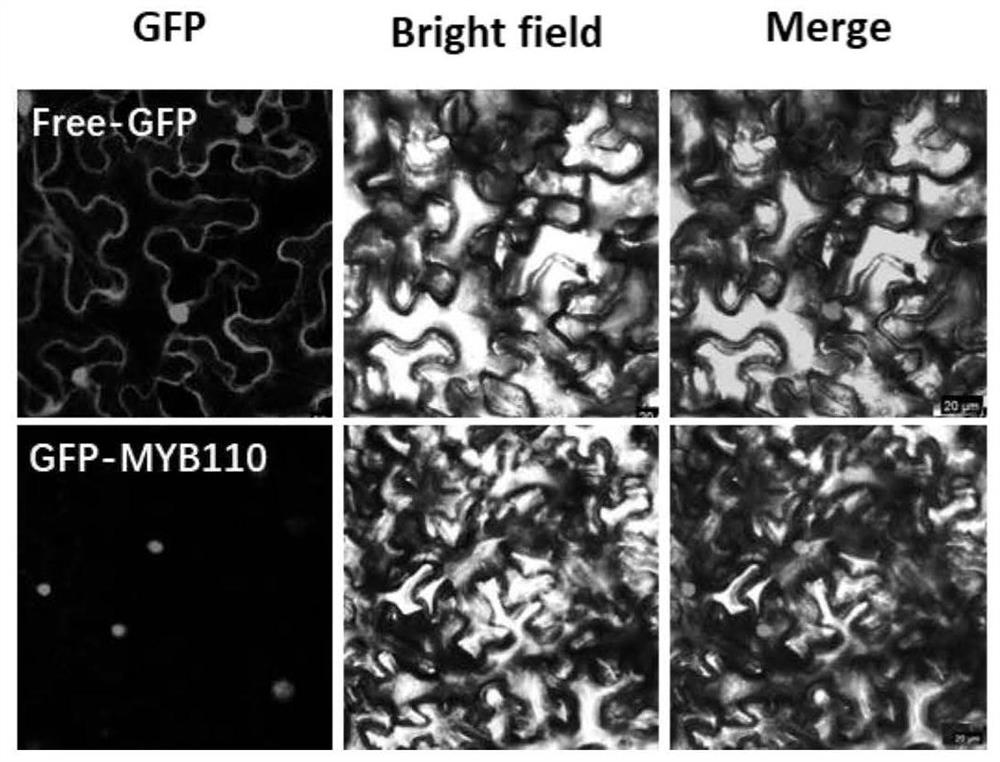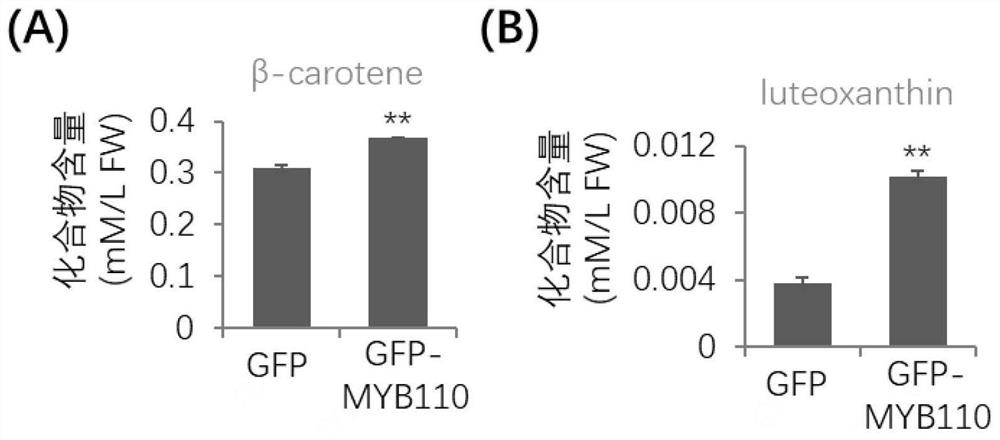CsMYB110 gene and application thereof in regulation of synthesis of carotenoids
A technology of carotene and genes, applied in the field of genetic engineering, can solve problems such as inability to breed and provide excellent genetic resources
- Summary
- Abstract
- Description
- Claims
- Application Information
AI Technical Summary
Problems solved by technology
Method used
Image
Examples
Embodiment 1
[0020] 1. Cloning and sequence structure analysis of CsMYB110 gene
[0021] CsMYB110 gene is a tea tree MYB class transcription factor gene, and its cloning and sequence structure analysis are as follows:
[0022] Shucha, a national-level tea tree variety, was first planted in the Agricultural Industrial Park of Anhui Agricultural University, Hefei, Luyang District, Anhui Province. The young leaves were used for RNA extraction. Total RNA was extracted using Trizol reagent (Invitrogen, USA) according to the instructions, and the RNA content and quality were detected with a spectrophotometer.
[0023] Reverse transcription to generate the first strand: take 1 μg RNA as a template, add 0.5 μg of downstream primers respectively according to the instructions of Promega’s M-MLV1 reverse transcriptase reagent kit, dilute to 15 μl, denature at 70°C for 5 minutes, and place on ice immediately Leave it for 5 minutes; then add M-MLV 5×buffer 5μl, dNTP (25mM) 5μl, rRNasin Ribonuclease In...
PUM
 Login to View More
Login to View More Abstract
Description
Claims
Application Information
 Login to View More
Login to View More - Generate Ideas
- Intellectual Property
- Life Sciences
- Materials
- Tech Scout
- Unparalleled Data Quality
- Higher Quality Content
- 60% Fewer Hallucinations
Browse by: Latest US Patents, China's latest patents, Technical Efficacy Thesaurus, Application Domain, Technology Topic, Popular Technical Reports.
© 2025 PatSnap. All rights reserved.Legal|Privacy policy|Modern Slavery Act Transparency Statement|Sitemap|About US| Contact US: help@patsnap.com



